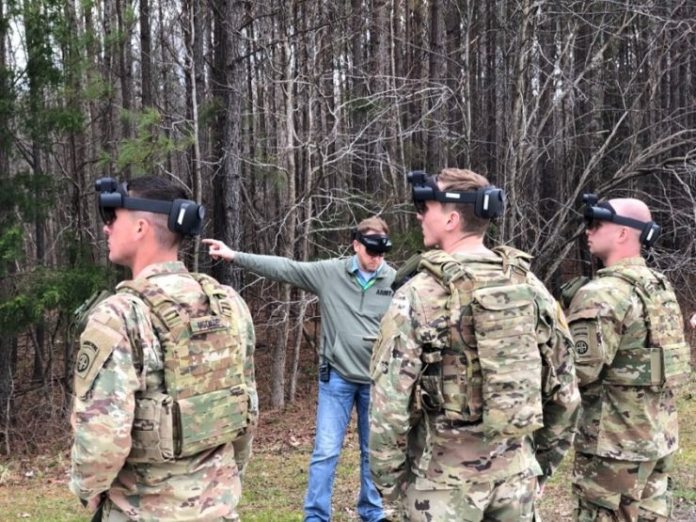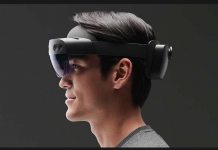In a briefing to CNBC, the US Army , CNBC journalist Todd Haselton got a firsthand look had a first look at the IVAS HoloLens 2 hardware and system. At US Army base Fort Pickett, the device has been developed to reduce the number of devices a soldier needs to carry. Leveraging Microsoft’s hardware, the IVAS HoloLens 2 HMDs remove the need for a soldier to carry phones, night vision and thermal goggles, and computers. No video was allowed, but approved images were published showing the system in action. Haselton describes the outfitted HoloLens 2 as a natural feeling device and says using it feels like being in a video game. “If this sounds familiar, you might be a gamer. The whole experience felt natural to me, as I’ve played lots of first-person shooter video games that show me exactly where I am on a map, where my teammates are and where the enemy is. It was almost like a real-life game of “Call of Duty. “But IVAS goes even further. It can also be used for thermal imaging. Night vision goggles currently used in the field emit a green glow, which the enemy can see. IVAS doesn’t glow as much and still allows soldiers to see other people in the dark. When I tried it, people glowed bright white, as if everyone in the room had suddenly turned into ghosts. With the lights off, I could see someone standing plainly behind a set of ferns, which I wouldn’t have been able to see otherwise.”
Microsoft Collaboration
While developed for in-the-field use, the US Army says the IVAS HoloLens 2 will also be an important training resource. “It’s not just for use in combat,” Under Secretary of the Army McCarthy said. “We can gather data on a soldier in training and improve their marksmanship. We can see their heart rate.” Expanding on why Microsoft was chosen for this project, officials say the company’s willingness to collaborate on feedback was essential. “We need to iterate often, and we found a partner with Microsoft that does that,” he said. “It’s abnormal that a vendor has direct input from soldiers for like two weeks.” The combat-ready HoloLens 2 units are still in development with early testing in the field expected during 2022 or 2023. The US Army says wider deployment is not likely until 2028.





